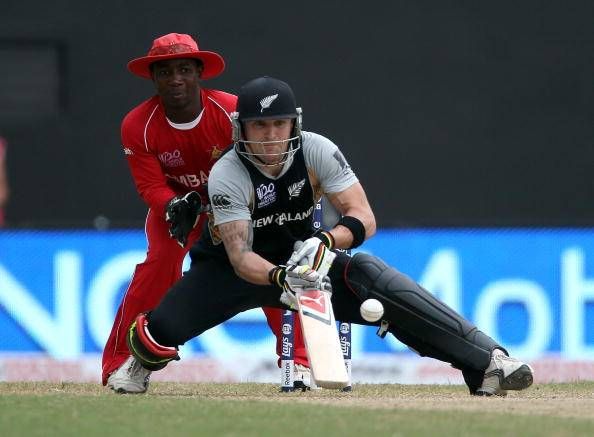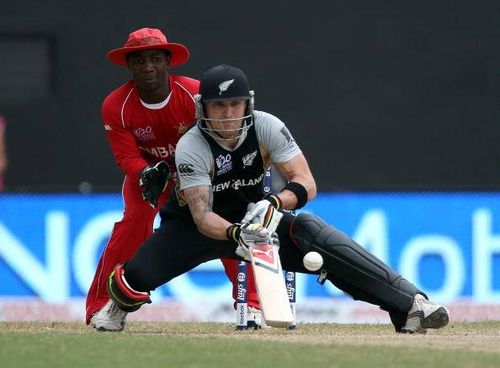
The dying art of persistence in cricket: Is innovation really remoulding the game?

I began to write this just after watching the final of the first Women’s Big Bash League in Australia. A nail biting finish would be an understatement to say the least. Also, the manner in which cricket is evolving into a wholesome entertainment package across geographies is quite heartening to see.
However, evolution, in my opinion involves taking the best in the past and present and re-moulding your approach for the future. Bats have become heavier and batsmen have become mightier as the years have gone by, but let’s face it, the sheer joy of watching cricket lies in the sight of a spinner beating a batsman with flight and guile in the air, or a pace bowler turn into a majestic cello player on the back of some good old reverse swing.
Traditionalism vs Innovation
I take nothing away from the modern day batsmen. In fact, the added burden of having three different styles over three formats of the game in itself is quite a challenge which more and more of this species have taken up to.
But cricket is not about the spectacular moments that sponsors like to replay a thousand times in a perfect attempt at creating brands out of cricketers. At least, it is not all about these. I am not discounting the scoops over the wicket-keeper or the slow ball bouncer or the paddle sweep of a pace bowler from outside off stump.
This requires skill and audacity of a different level. But what is forgotten by the ones watching the game is that cricketers that can pull these off at will, and use it as aberrations from the routine. AB de Villiers, for example, has as clean a cover drive and straight drive on a ‘normal’ day when he decides to be curtailed to not be a superman.
Ashwin and Williamson: prime examples
Ashwin, as he discovered, is primarily an off-spin bowler who can do a whole lot more (once in a while) with ball in hand. Ashwin, as we all know, was all over the place till about the ICC World Cup last year. It is during that spell against Pakistan, where he bowled the perfect off-spinner’s line and length, with the ball dipping in to the left handed Haris Sohail and leaving him at the last moment taking the outside edge to first slip, that we saw the change happen.
That he is a sorted guy is well known, but the innate tendency to always outsmart the batsmen had started to take its toll and it’s good for Indian cricket that he realized this. What has followed is a treat to watch. A constant line and a constant change in average pace depending on pitch conditions have made him a threat of a different kind. He asks questions and tests you.
He is like the alligator that waits for the prey to make the mistake. He knows that constant building of pressure creates a crack in any batsman’s mind and when that happens, any batsman tends to lose focus, footwork, or sometimes, both.
Similarly, Kane Williamson is one batsman who has understood that he has the potential to be one of the greats in the game by continuing to do what he does best. Tick along ball by ball and build an innings. An innings that is constructed on the basis of the match situation.
A prodigy who walked in to probably the most under achieving cricket playing nation, Williamson, has fast matured into being the most valuable scalp in the Kiwis line-up because of what he brings to the table- stability.
Williamson realizes that if he sticks to his strength of concrete defence and proper cricketing shots, he has in him the strength to make a 200 ball test century, as well as, a 30 ball 70 in T20s. What these two have done is what is the crux of cricket or any sport for that matter. Persisting on doing the basics right and building a niche on this foundation.
As persistent as they were
If Muttiah Muralitharan and Shane Warne were magicians, it was beacuse they had amazing control of the ball in the air; if Rahul Dravid and Alastair Cook are known as mass accumulators, it is because they have always been aware of their off-stump; if Sangakara and Ponting were stylish, it was because they never took many unwanted risks, as their arrays of strokes were way too much to incorporate more ‘fancy’ looking shots.
The game evolved, and their careers matured too. The spectator wanted more entertainment then too, but what these greats did was to build on their natural game and persist with the basics that helped build their game in the first place. The recently concluded run–feast of a series down under highlighted what a lack of persistence on your inherent strengths does.
With the kind of abrasive strips on offer throughout Australia, Indian pace bowlers as well as the Aussies failed to maintain the ball as the Wasim Akrams and Zaheer Khans of the world would to ensure just enough reverse swing at the back end of an innings to curtail the batsmen.
Basic things gone missing
Another basic thing that all good fast bowlers would depend on in years gone by was the yorker which I am worried needs a ‘save the yorker’ movement in the sub-continent at least. But these things ought to return to ensure sanity prevails in the sport we love.
But yorkers, and well constructed innings or for that matter, a spell constructed wicket like that of Haris Sohail are the things that define the essence of the game we love. So, it’s imperative that the flag-bearers of our wonderful sport continue to evolve the right way and stick to ‘practise makes perfect’ approach in a world that is ever changing and yet the same in many ways after all.
For the sake of entertainment, are we fans dictating terms after all?